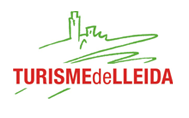History

The origins of the city of Lleida can betraced back some 2,500 years tothe mid-6th century BC, whenthe Ilerget people, of Iberianextraction, settled in the areaand established a small walledtown on the Roca Sobirana (oneof the three terraces of theancient city). This earlysettlement was known as Iltirdaor Iltirta, which with the passingcenturies gradually evolved intothe name by which the city isknown today: Lleida.
The citizens of Ilerget led a moreor less peaceful existencebased around agriculture andlivestock farming until invadersbegan to arrive. First to comewere the Carthaginians,followed by the Romans. Bothencountered resistance fromthe Ilerget people, who foughtfiercely for their independenceunder leaders such as Indíbiland Mandoni. After finallysuccumbing to the Romans, theIlergets gradually becameRomanized, and around AD 250Iltirta became known as Ilerda.Following the fall of the RomanEmpire, the city fell into the handsof the Visigoths, who called itLerita. It was occupied onceagain between 716 and 719, thistime by the Arabs, who remainedin what they called Larida for fourcenturies until October 1149,when Ramon Berenguer IVconquered the city and broughtit under Catalan administration.The following year, Leyda wasgranted a Town Charter andbecame home to a great manypeople from the Pyrenean regionof Pallars. Half a century later, in1203, work began on theconstruction of one of the city’stwo cathedrals, the Seu Vella, abuilding that would become oneof its most emblematicmonuments. Construction wascompleted in 1431.

From the Low Middle Ages untilthe 15th century the city wasnotable for being the onlycentre of higher learning in theKingdom of Aragon. The EstudiGeneral University was foundedin 1300 by King Jaume II.Another important developmentduring Medieval times was theestablishment of the citygovernment in the formerSanaüja palace in 1382. Fromthis moment on the buildingwould be known as the Palaude la Paeria, and it remains theseat of the City Council to thisday. Another major eventtowards the end of this periodwas the construction of one ofthe city’s most beautifulbuildings, the Former Hospitalof Santa Maria, which has beenthe headquarters of theInstitute of Lleidan Studiessince the organization wascreated in 1942.

The Modern Age was largely marked by a period of recession. It was a time of disease and wars such as the Segadors Peasant Revolt, a popular uprising that lasted from 1640 to 1652. The city also lost its independence, as the Decree of Nueva Planta introduced by Felipe V in 1714 stripped Lleida of its university and its city government, while its most distinctive monument, the Seu Vella, was closed to worshippers and turnerd into a quarter.
The city recovered during the 18th century, when the first urban-restructuring processes took place under the Marquess of Blondel and the Baron of Maials, giving the city a new urban layout in keeping with its role as provincial capital. This was also the time of the Enlightenment, and the city saw the construction of its second cathedral under the reign of Carlos III . Lleida once again encountered hard times during the first part of the 19th century and had to endure further ravages of war, this time at the hands of Napoleon.
Despite this, the city began to recover during the second half of the century, and the quality of life improved further for its inhabitants during the ensuing years, thanks among other things to the arrival of the railway (1860), the inauguration of the Camps Elisis Park (1864) and the introduction of the city’s first modern development plan under the architect Josep Fontseré .
Lleida began the 20th century as part of the Mancomunitat deCatalunya, subsequently living through the turbulent events of the first part of the century and suffering terrible damage during the Spanish Civil War (1936-1939). Reduced to 40,000 inhabitants, a great deal of reconstruction work was required, though the difficult post-war years gradually gave way to a period of urban, commercial and demographic growth.
Today Lleida is a modern, well communicated city that has enjoyed high levels of growth and development over recent decades and currently boasts a population of about 140.000 people. The city’s expansion on both sides of the River Segre has led to the emergence of a number of different districts, all of which are connected to the city centre via seven bridges: the Pont Vell (Old Bridge), the Pont Nou (New Bridge), the Pont de la Universitat (University Bridge), the Pont de Pardinyes (Pardinyes Bridge), Príncep de Viana Bridge, the Victoriano Muñoz Bridge, and the Liceo Escolar, Avenida del Segre and Maristes pedestrian alkways.
The early 21st century has witnessed a significant level of urban expansion and the introduction of many different kinds of facilities. Important events on the cultural live were La Llotja, Theatre and Conference Centre; the Museum of Lleida, which incorporates the County and Diocesan Museums, and the opening of the Castle of the King - Suda and the Templar Castle of Gardeny. Other sites of cultural interest include the Roda Roda Museum, La Panera Art Centre, the Jaume Morera Art Museum, the Water Museum and the Marian Academy.
The most important currently project under way include construction of a Parador hotel in the former Roser Convent. This broadening range of cultural facilities further adds to the city’s allure, making it an essential destination for those who love art, culture, learning and history. Lleida is a must for anyone who wants to see a city that combines its Iberian, Roman, Visigoth, Arabic and Christians past with a modern, innovation and cutting-edge present.



